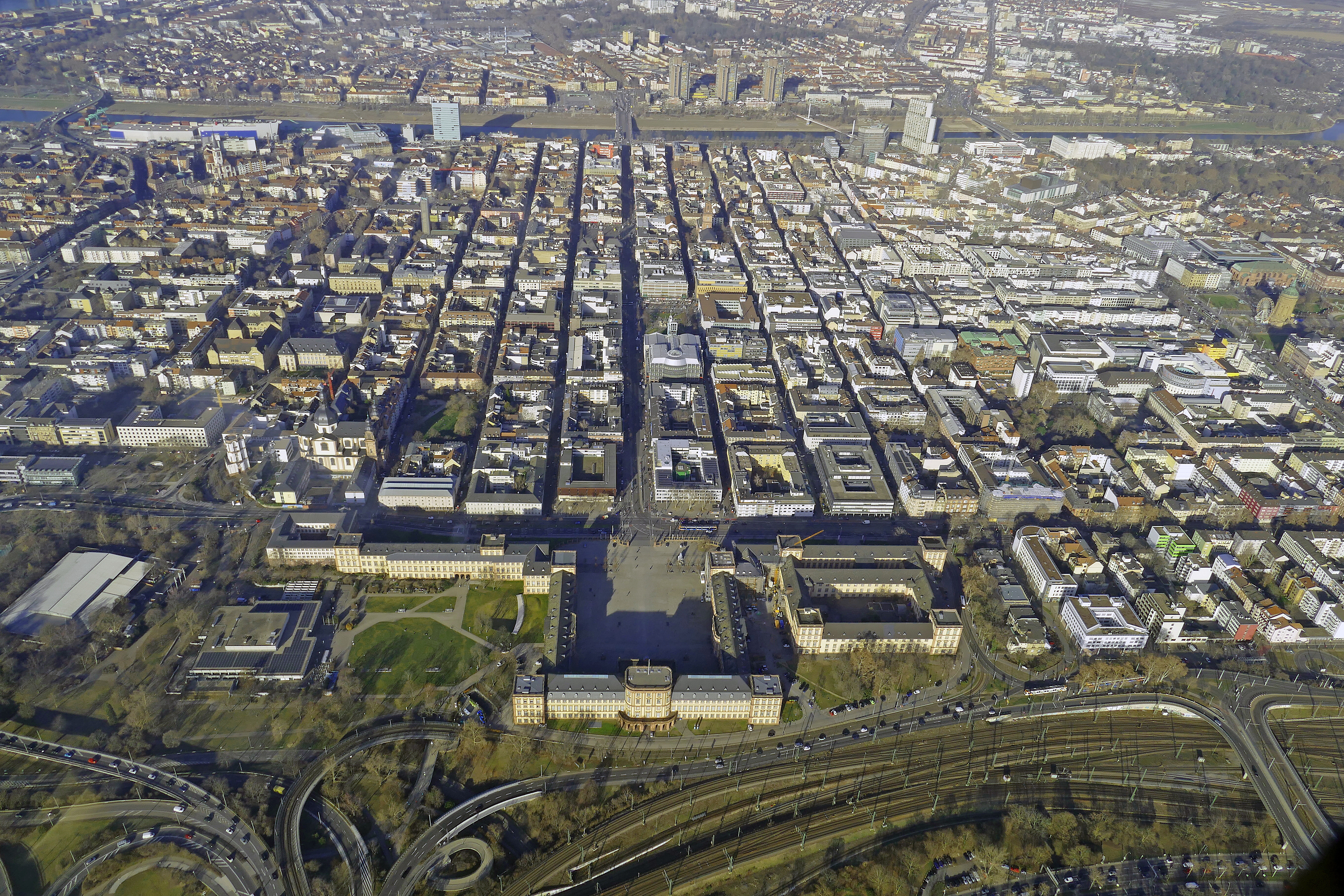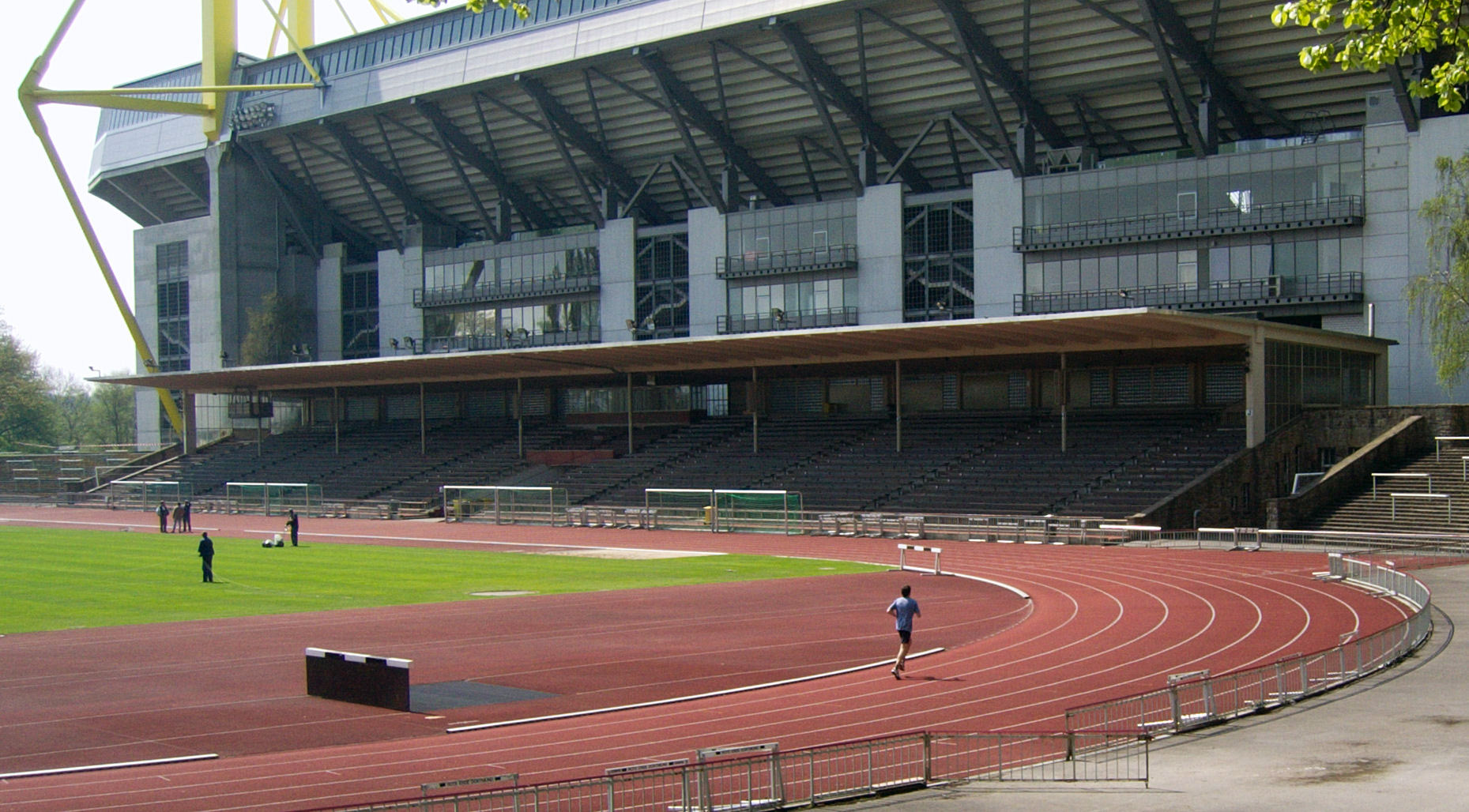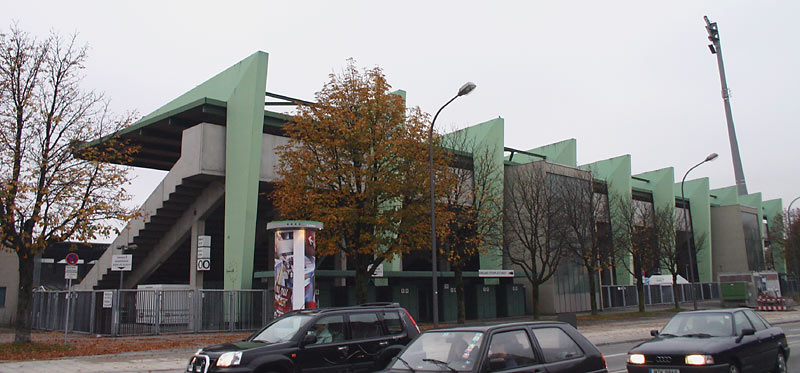|
German Football Championship 1948
The 1948 German football championship, the 38th edition of the competition, was the culmination of the 1947–48 football season in Allied-occupied Germany. 1. FC Nürnberg were crowned champions for the seventh time after one-leg knock-out tournament. It was the first time the championship had been played since 1944. It was Nürnberg's tenth appearance in the final. For the losing finalists 1. FC Kaiserslautern, it was the first appearance in the final since the establishment of a national championship in 1903. Eight teams were to take part in the final stage which was played in a one-leg knock-out tournament, the vice-champions and champions of the British, American and French occupation zones, the champion of the Soviet occupation zone and the Berlin champion. In the end, SG Planitz were not allowed to travel to Stuttgart to play their quarter final against eventual champions Nürnberg. The 1948 championship is unique as it is the only one of the German championships where no ... [...More Info...] [...Related Items...] OR: [Wikipedia] [Google] [Baidu] |
German Reunification
German reunification (german: link=no, Deutsche Wiedervereinigung) was the process of re-establishing Germany as a united and fully sovereign state, which took place between 2 May 1989 and 15 March 1991. The day of 3 October 1990 when the German Reunification Treaty entered into force dissolving the German Democratic Republic (GDR; german: link=no, Deutsche Demokratische Republik, DDR, or East Germany) and integrating its recently re-established constituent federated states into the Federal Republic of Germany (FRG; german: link=no, Bundesrepublik Deutschland, BRD, or West Germany) to form present-day Germany, has been chosen as the customary ''German Unity Day'' () and has thereafter been celebrated each year from 1991 as a national holiday. East and West Berlin were united into a single city and eventually became the capital of reunited Germany. The East Germany's government led by the Socialist Unity Party of Germany (SED) (a communist party) started to falter on 2 May 1 ... [...More Info...] [...Related Items...] OR: [Wikipedia] [Google] [Baidu] |
Wormatia-Stadion
EWR-Arena (called Wormatia-Stadion until 2011) is a multi-use stadium in Worms, Germany. It is currently used mostly for football Football is a family of team sports that involve, to varying degrees, kicking a ball to score a goal. Unqualified, the word ''football'' normally means the form of football that is the most popular where the word is used. Sports commonly c ... matches and is the home of Wormatia Worms. The stadium has a capacity of 5,724 people. It opened in 1927 and was renovated in 2008 when Wormatia Worms were promoted into Regionalliga Süd. External linksVenue information Football venues in Germany Wormatia Worms Worms, Germany Sports venues in Rhineland-Palatinate {{RhinelandPalatinate-struct-stub ... [...More Info...] [...Related Items...] OR: [Wikipedia] [Google] [Baidu] |
Mannheim
Mannheim (; Palatine German: or ), officially the University City of Mannheim (german: Universitätsstadt Mannheim), is the second-largest city in the German state of Baden-Württemberg after the state capital of Stuttgart, and Germany's 21st-largest city, with a 2020 population of 309,119 inhabitants. The city is the cultural and economic centre of the Rhine-Neckar Metropolitan Region, Germany's seventh-largest metropolitan region with nearly 2.4 million inhabitants and over 900,000 employees. Mannheim is located at the confluence of the Rhine and the Neckar in the Kurpfalz (Electoral Palatinate) region of northwestern Baden-Württemberg. The city lies in the Upper Rhine Plain, Germany's warmest region. Together with Hamburg, Mannheim is the only city bordering two other federal states. It forms a continuous conurbation of around 480,000 inhabitants with Ludwigshafen am Rhein in the neighbouring state of Rhineland-Palatinate, on the other side of the Rhine. Some northe ... [...More Info...] [...Related Items...] OR: [Wikipedia] [Google] [Baidu] |
Dortmund
Dortmund (; Westphalian nds, Düörpm ; la, Tremonia) is the third-largest city in North Rhine-Westphalia after Cologne and Düsseldorf, and the eighth-largest city of Germany, with a population of 588,250 inhabitants as of 2021. It is the largest city (by area and population) of the Ruhr, Germany's largest urban area with some 5.1 million inhabitants, as well as the largest city of Westphalia. On the Emscher and Ruhr rivers (tributaries of the Rhine), it lies in the Rhine-Ruhr Metropolitan Region and is considered the administrative, commercial, and cultural center of the eastern Ruhr. Dortmund is the second-largest city in the Low German dialect area after Hamburg. Founded around 882,Wikimedia Commons: First documentary reference to Dortmund-Bövinghausen from 882, contribution-list of the Werden Abbey (near Essen), North-Rhine-Westphalia, Germany Dortmund became an Imperial Free City. Throughout the 13th to 14th centuries, it was the "chief city" of the Rhine, Westphali ... [...More Info...] [...Related Items...] OR: [Wikipedia] [Google] [Baidu] |
Rote Erde
Stadion Rote Erde (; ''Red Earth Stadium'') is a 25,000 capacity (3,000 seated) football and athletics stadium in Dortmund, North Rhine-Westphalia. It serves as the home stadium to Borussia Dortmund II and several athletic clubs. The stadium was built in between 1924 and 1926 at a cost of 1.8 million German Mark. The stadium was inaugurated in 1926, with a match between the City of Dortmund and FC Wacker München (1-11).http://www.martijnmureau.nl/index.php/voetbal/vergane-glorie/368-vergane-glorie-stadion-rote-erde Extensive history and pictures of the stadium Rote Erde History Early History (1921 to 1937) The first plans for the stadium date back to 1921, when the Municipality of Dortmund decided to build a Volkspark in the southern area of Dortmund. Architect Hans Strobel designed the park, in which a swimming pool, a multi-functional stadium and the Westfalenhallen would be built. The stadium was built between 1924 and 1926 and was inaugurated in 1926. On September 4, ... [...More Info...] [...Related Items...] OR: [Wikipedia] [Google] [Baidu] |
Edmund Adamkiewicz
Edmund "Adam" Adamkiewicz (21 April 1920 – 4 April 1991) was a German footballer. Born in Hamburg, Adamkiewicz's career began in Wilhelmsburg, where he played for ''Viktoria Wilhelmsburg'', and led him to various clubs, his first spell with Hamburger SV starting in early 1940. Both of his international appearances were during World War II. On 22 November 1942, Adamkiewicz scored his only international goal. After the war finished, Adamkiewicz played for Eintracht Frankfurt Eintracht Frankfurt e.V. () is a professional sports club based in Frankfurt, Hesse, Germany. It is best known for its football club, which was founded on 8 March 1899. The team is currently playing in the Bundesliga, the top tier of the Germa ... during the 1946–47 season and played 21 times. In 1947 he returned to Hamburg where he became top-scorer for two non-consecutive seasons, before moving on in 1951. He was with VfB Mühlburg/Karlsruher SC for a time before returning to Hamburg once agai ... [...More Info...] [...Related Items...] OR: [Wikipedia] [Google] [Baidu] |
Jakob Miltz
Jakob Miltz (23 September 1928 – 18 February 1984) was a German footballer who played for TuS Neuendorf, Hannover 96 Hannoverscher Sportverein von 1896, commonly referred to as Hannover 96 (), Hannover, HSV or simply 96, is a German professional football club based in the city of Hanover, Lower Saxony. They played in the Bundesliga for a total of 30 years betwe ... and 1. FC Kaiserslautern. External links * * 1928 births 1984 deaths German men's footballers Men's association football forwards Germany men's international footballers TuS Koblenz players Hannover 96 players 1. FC Kaiserslautern players Sportspeople from Koblenz Sportspeople from the Rhine Province Footballers from Rhineland-Palatinate West German men's footballers {{Germany-footy-forward-1920s-stub ... [...More Info...] [...Related Items...] OR: [Wikipedia] [Google] [Baidu] |
TSV 1860 Munich
, commonly known as TSV 1860 München (; lettered as ) or 1860 Munich, is a sports club based in Munich. The club's football team currently plays in the 3. Liga, the third tier of German football. 1860 Munich was one of the founding members of the Bundesliga in 1963, becoming West German champions in 1966, and played a total of 20 seasons in the top flight. Since their relegation from the 2. Bundesliga, 1860 Munich play their home games at the Grünwalder Stadion. History Origins of the club The roots of the TSV's founding as a physical fitness and gymnastics association go back to a meeting held 15 July 1848 in a local pub, Buttlesche Brauerei zum Bayerischen Löwen. It was a time of revolutionary foment due to the 1848 Revolutions, and the club was banned in 1849 by the Bavarian monarchy for "republican activities". The club was formally reestablished on 17 May 1860 and after mergers with a number of other local associations in 1862 was known as Turnverein München. A foot ... [...More Info...] [...Related Items...] OR: [Wikipedia] [Google] [Baidu] |
TuS Koblenz
TuS Koblenz is a German association football club, located in Koblenz, Rhineland-Palatinate. Fussball Club Deutschland Neuendorf, which was formed in 1911, is viewed as the foundation of the modern club. History Nazi era (1933–1945) The original club was lost in 1917, but in 1919 the successor side Fussball Verein 1911 Neuendorf was assembled out of the former memberships of FCD, Fussball Club Concordia 1910 Neuendorf, and Fussball Club Alemania 1912 Neuendorf, both of which had folded in 1914. In 1933, FV joined the Gauliga Mittelrhein, one of sixteen top flight divisions established with the re-organization of German football in Nazi Germany that year. The club was immediately relegated, and in 1934 was joined by Turnverein 1864 Neuendorf, Arbeitersportverein Neuendorf and DJK Neuendorf, to create Turn- und Spielvereinigung Neuendorf. Both ASV and DJK were forced into the merger through the policies of the Nazi regime which regarded worker's and church-sponsored clubs as ... [...More Info...] [...Related Items...] OR: [Wikipedia] [Google] [Baidu] |
FC St
FC may refer to: Businesses, organisations, and schools * Fergusson College, a science and arts college in Pune, India * Finncomm Airlines (IATA code) * FranklinCovey company, NYSE stock symbol FC * Frontier Corps, a paramilitary force in Pakistan Science and technology Computing * fc (Unix), computer program that relists commands * FC connector, a type of optical-fiber connector * Flash controller * Family Computer, Japanese version of the Nintendo Entertainment System game console * Fibre Channel, a serial computer bus * Microsoft File Compare program * fc a casefolding feature in perl Vehicles * Fairchild FC, 1920s and 1930s aircraft * Holden FC, a motor vehicle * A second generation Mazda RX-7 car * Fully cellular, a type of container ship Medicine A two-in-one vaccine against the flu and common cold. Other sciences * Female condom (FC1, FC2), a contraceptive * Foot-candle (symbol fc or ft-c), a unit of illumination * Formal charge, a Lewis structure concept in chemistr ... [...More Info...] [...Related Items...] OR: [Wikipedia] [Google] [Baidu] |
British Occupation Zone Football Championship
The British occupation zone football championship was an association football competition in the British zone of Allied-occupied Germany after the Second World War. Two editions of the tournament were held, in 1947 and 1948, both of which were won by Hamburger SV.''kicker'', page: 248 & 249 While attempts were made to stage a German football championship in 1947 efforts failed but, in the following season, a championship was staged with the best two clubs from the British zone championship qualified for the tournament. While the 1947 season saw the best teams of regional leagues qualify for the tournament the following edition saw the top four of each of the new Oberliga Nord and Oberliga West take part, qualified through the 1947–48 Oberliga season.''Kicker'', page: 243 The competition was held within the British occupation zone which later became part of West Germany, compromising of the federal states of Hamburg, Lower Saxony, North Rhine-Westphalia and Schleswig-Holstein. SV ... [...More Info...] [...Related Items...] OR: [Wikipedia] [Google] [Baidu] |




